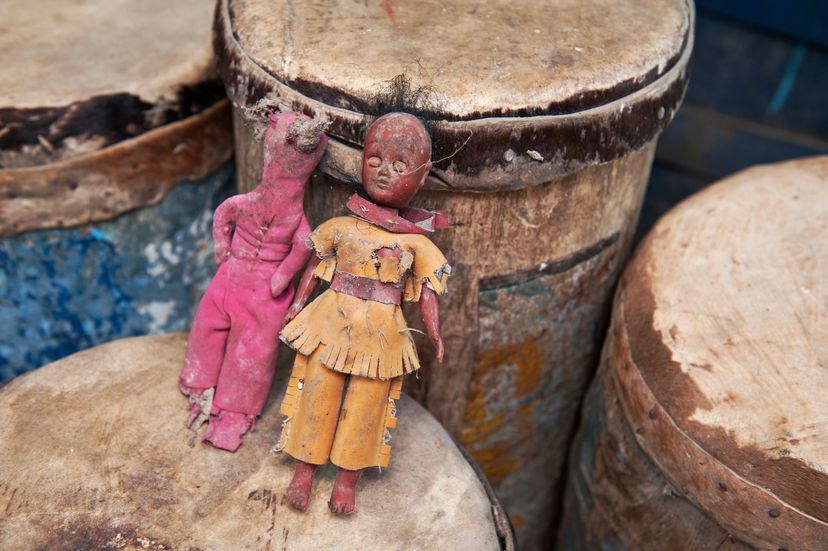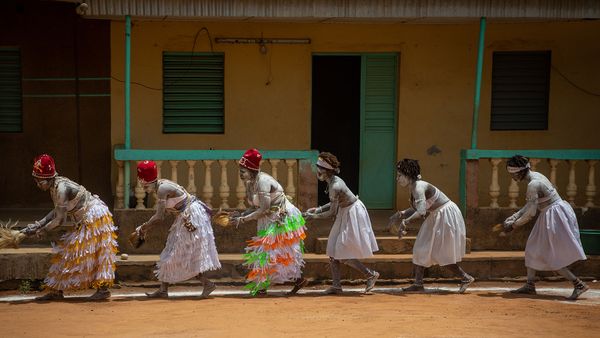Despite the controversies and ethical considerations that surround their use, voodoo dolls continue to captivate the public imagination, serving as enduring symbols of the mysterious and the unknown. This enduring allure can be attributed to a variety of factors, from the dolls' evocative visual representation to the deep-rooted human desire to engage with the occult and the supernatural.
One of the primary drivers of the ongoing fascination with voodoo dolls is their striking visual aesthetic. These small, human-like figurines, often adorned with a range of symbolic elements, possess a unique and captivating presence that has the power to both intrigue and unsettle. The combination of natural materials, such as hemp or cotton, with more ominous elements, such as bones or teeth, creates a striking juxtaposition that speaks to the duality and complexity of these objects.
Moreover, the use of voodoo dolls in popular culture has further contributed to their enduring allure, with these objects serving as recurring motifs in horror films, television shows, and various forms of visual media. The sense of mystery and danger that often surrounds the depiction of voodoo dolls has fueled the public's curiosity and imagination, perpetuating the belief in their supernatural powers and the potential for harm.
However, the allure of voodoo dolls extends beyond their visual representation and their portrayal in popular culture. At a deeper level, these objects tap into the universal human desire to engage with the mysterious and the unknown, to explore the boundaries of the physical and the spiritual realms, and to harness the power of symbolic representation for personal transformation and empowerment.
In this context, voodoo dolls serve as tangible symbols of the exploration of the occult and the pursuit of alternative spiritual practices. As individuals and communities continue to seek out new ways to connect with their cultural heritage, to address personal and societal challenges, and to explore the potential for personal growth, these enigmatic objects have emerged as powerful tools for this journey of discovery.
Ultimately, the enduring allure of voodoo dolls lies in their ability to captivate the human imagination, to evoke a sense of wonder and curiosity, and to serve as a gateway to the exploration of the rich tapestry of beliefs and practices that have shaped the human experience throughout history. As these objects continue to fascinate and intrigue, they stand as a testament to the enduring power of the occult and the enduring relevance of ancient spiritual traditions in the modern world.
In the captivating world of voodoo dolls, we have uncovered a rich tapestry of history, symbolism, and cultural diversity. These enigmatic objects have long captured the public imagination, evoking a sense of mystery, fear, and fascination, while also serving as powerful tools for personal and spiritual transformation in various belief systems around the globe.
Through our exploration, we have gained a deeper understanding of the origins and evolution of voodoo dolls, tracing their roots back to ancient civilizations and the diverse spiritual traditions that have embraced these objects over the centuries. We have examined the intricate symbolism that imbues these dolls with profound meaning, reflecting the deep connection between the physical and the spiritual realms.
As the modern resurgence of voodoo dolls continues, we have also examined the ethical considerations and potential risks associated with their use, underscoring the importance of a responsible and informed approach to these powerful tools. By embracing a deep respect for cultural and spiritual traditions, a strong ethical foundation, and a commitment to harm reduction, practitioners can harness the transformative power of voodoo dolls in a way that is both empowering and socially responsible.
This article was created using AI technology.





